Tuscany, we have pointed out several times in our magazine, is often crushed by its reputation as the “cradle of the Renaissance,” so much so that for many this region is associated exclusively with ancient art. In reality, Tuscany is a thriving land of contemporary art: here contemporary art is produced, sold, collected, and exhibited, as indeed it has always been throughout its history since medieval art and Renaissance art were also, of course, contemporary art of their eras. There are many souls of contemporary Tuscany, and one of these souls is the outdoor collections, which find their home in lush parks, forests, and gardens.
In thearticle on artist parks, they recalled that scholar Enrico Crispolti had stated that in Italy “the problem of environmental art originates precisely from experiences implemented in good part in Tuscany.” These experiences have also been possible thanks to those whose actions have supported contemporary art, or collected or preserved it for public display. In this article, therefore, let us look at ten contemporary art collections found in as many parks to visit in the region.
1. Villa Medicea La Magia - Park Museum “Lo Spirito del Luogo” (Quarrata, Pistoia)
Let’s begin our journey with a splendid Medici villa, La Magia (to be read with the accent on the “a,” “Màgia,” in the sense of “great,” from the Latin maius), which stands in the countryside of Quarrata, not far from Pistoia: the ancient history of the villa begins with one of the most powerful Florentine families, the Panciatichi, who acquired the land on which the mansion stands today and built some houses there. La Magia in the meantime had begun to take on its present appearance, and the villa, along with all its possessions, was purchased in 1583 by Grand Duke Francesco I de’ Medici, and became part of their villa system: it was therefore renovated by the court architect, Bernardo Buontalenti, and remained in the family’s ownership for almost a century, until in 1645 it was ceded to the Attavanti family, who between the seventeenth and eighteenth centuries promoted further major renovations, causing it to obtain its present appearance. It then passed from family to family until the last owners, the Amati Cellesi, who in 2002 gave it to the Municipality of Quarrata, making it a venue for events and, since 2005, for a contemporary art park that continues to be enriched year after year. In fact, it was the municipality’s precise desire to promote a cultural project that, through contemporary art, could emphasize the specificities of this land and its landscapes. The works of the great contemporary artists that can be admired in the gardens of the Villa (among others: Maurizio Nannucci, Hidetoshi Nagasawa, Daniel Buren, Anne and Patrick Poirier) are part of an itinerary that intends to merge the works with the spirit of this place and its centuries-old history to provide the visitor with food for thought on the fundamental relationship between man and nature that in Tuscany has guided and continues to guide the shaping of the landscape, the birth of urban centers, and the protection of the environmental heritage. For information you can visit the Villa’s official website.
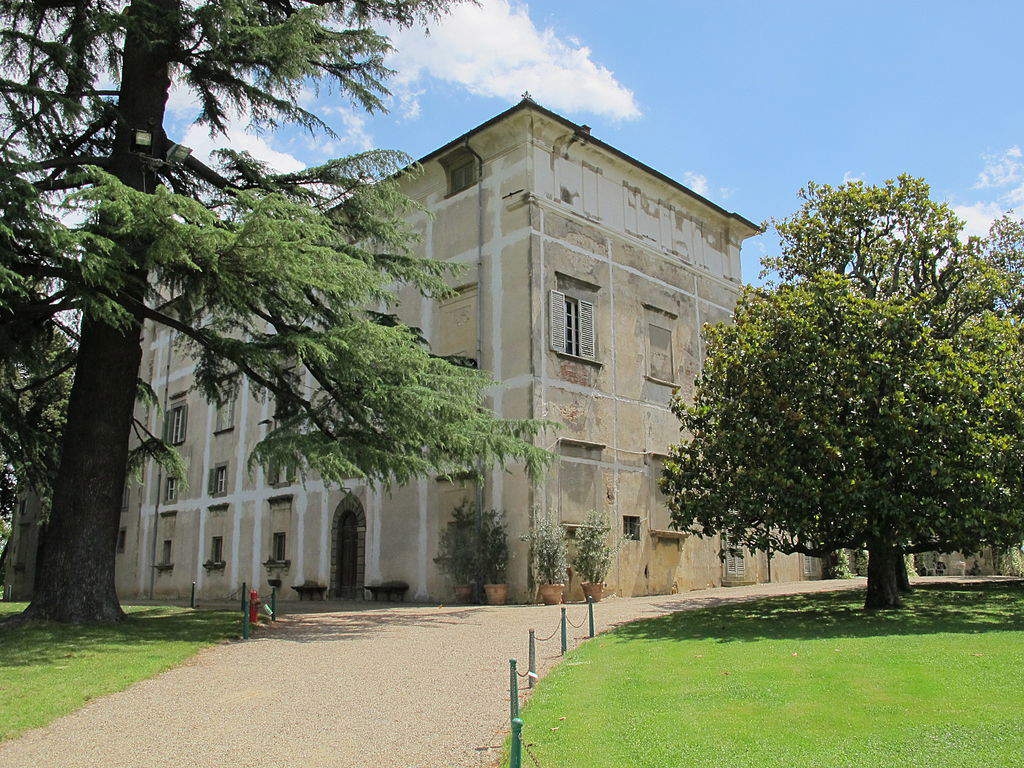 |
| Villa La Magia. Ph. Credit Francesco Bini |
2. Pinocchio Monumental Park (Collodi, Pistoia)
The Pinocchio Park in Collodi is one of the most beloved places for Tuscan families, because here the whole family can spend unforgettable moments, in the park dedicated to the puppet born from the pen of Carlo Lorenzini: for children there are games, activities, workshops and a new “adventure park,” while adults can take a path among the monumental sculptures that some great artists of the 20th century have dedicated to Pinocchio. It was 1951 when the mayor of Pescia (on whose municipal territory the hamlet of Collodi is located) thought of dedicating a park to Pinocchio to pay homage to its author: the idea was to build a path in stages to make everyone relive the fairy tale. And so it was that some great artists, including Pietro Consagra (who made as many as 21 sculptures), Emilio Greco and Venturino Venturi worked for at least twenty years on the realization of this extraordinary project, which also availed itself of the collaboration of two architects, Pietro Porcinai and Marco Zanuso, who were in charge of the scenographic part and the built structures, respectively. And so it is that, in a surprising way and with unexpected changes of rhythm, in a forest where holm-oak, olive, boxwood and other essences abound, the characters of the fairy tale materialize: master Geppetto, the carabiniere, the talking cricket, the fairy, the cat and the fox, and of course Pinocchio, until we arrive at the majestic shark that introduces the final bars of the literary path. A garden designed almost on the model of the romantic parks that introduced the visitor to a kind of initiatory journey, a monumental park to return to the memory of childhood, a fantastic path in the midst of nature among the sculptures of some of the best Italian artists of the 20th century. All information about Pinocchio Park can be found on its official website.
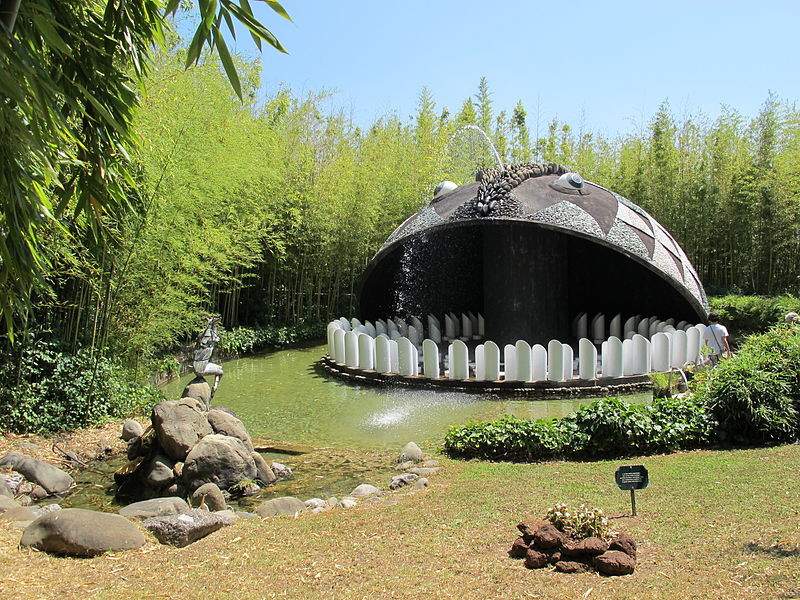 |
| The Pinocchio Monumental Park |
3. Villa Celle (Pistoia)
It is located in the hamlet of Santornato in Pistoia and is an ancient aristocratic villa that existed as early as the 15th century: it was formerly owned by the Fabroni family, one of the most illustrious families of Pistoia. Over the centuries it underwent several changes of ownership until it was purchased in 1969 by entrepreneur Giuliano Gori, a contemporary art collector who had started his own collection in the 1950s. Together with his wife Pina, he had started a collection focusing mainly on artists who had introduced innovations in artistic styles and language: however, the growth of the collection had been so sudden that it required a suitable space, identified in Villa Celle. After the purchase of the mansion, the transfer of the works began in 1970, and at the same time the collection continued to grow and still does, including site-specific works created specifically for this place. The inauguration dates back to 1982, with the first eighteen works, and the subsequent opening to the public. Among the artists on view there are Alberto Burri, Stephen Cox, Jean-Michel Folon, Robert Morris, Dennis Oppenheim, Beverly Pepper, Mauro Staccioli, A. R. Penck, Richard Serra, Robert Morris, Hidetoshi Nagasawa, Joseph Kosuth, Anne and Patrick Poirier, Sol LeWitt, Dani Karavan, Daniel Buren, Luciano Massari, Fausto Melotti, Enrico Castellani, Ian Hamilton Finlay, and Hossein Golba. The Gori Collection today identifies itself, the official presentation reads, “as an interdisciplinary laboratory that relentlessly continues a creative activity where, with assiduous alternation, artists from different continents take part.” To learn more you can visit the official website of the villa and the collection.
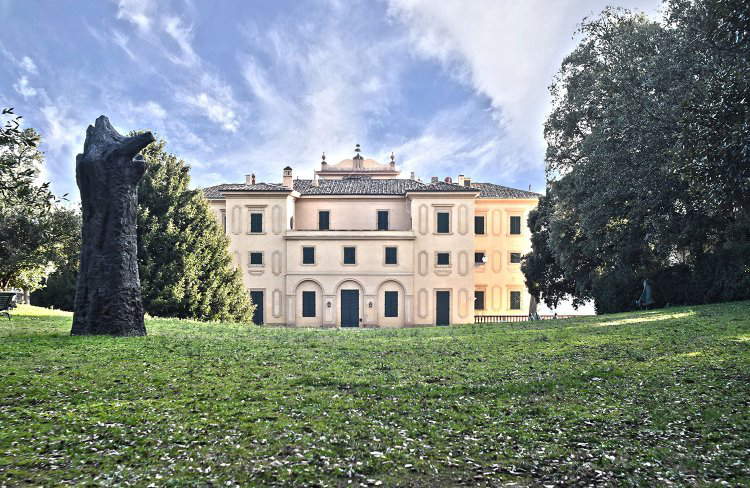 |
| Villa Celle |
4. Padula Park (Carrara)
Carrara, the world capital of marble, from 1957 to 2010 hosted the International Sculpture Biennial, one of the world’s most important contemporary art exhibitions dedicated to sculpture, and over the years there are many works that the great artists who have passed through the Apuan city have left in the area. Several of these have enriched the city’s contemporary art museum, the Plastic Arts Center, while many others, some of them monumental in size, have instead been placed in Carrara’s main public park, the Parco della Padula, which occupies a hill that descends from Sorgnano, one of the hamlets upstream, to the city center. In the 19th century, the hill was transformed into a splendid park by the Fabbricotti family, a dynasty of marble entrepreneurs, who had a villa built in the park, now a museum. Later becoming municipal property, the park was redeveloped in the 1970s and today, as mentioned, is home to a sculpture park that houses the works created for the 2002 Biennial: the theme of that edition was Sculpting Marble, and to walk through the Parco della Padula is to take a journey with an ancient flavor, through all the possibilities offered by marble, among works by artists such as Mario Merz, Sol LeWitt, Robert Morris, Anne and Patrick Poirier, Ian Hamilton Finlay, Luigi Mainolfi, and Claudio Parmiggiani. For more information, the site to visit is Carrara Museums.
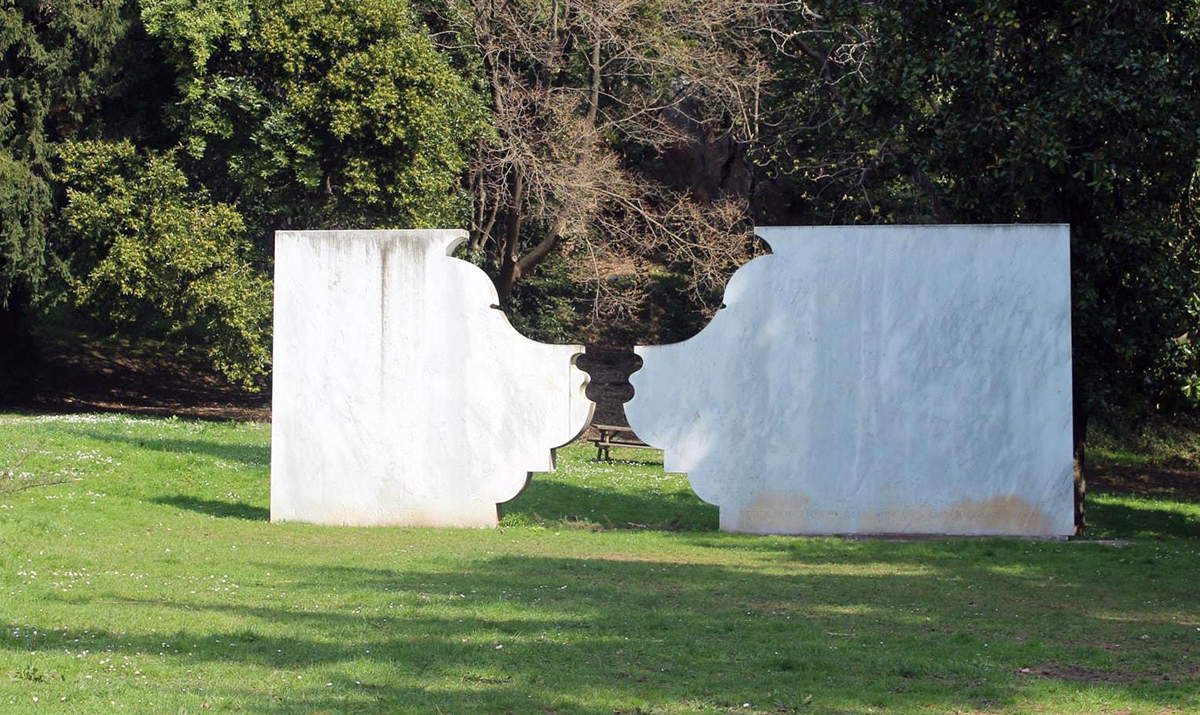 |
| Padula Park |
5. Luicciana Museum of Contemporary Art (Cantagallo, Prato)
Despite the name leading one to think of an enclosed place, the Museum of Contemporary Art in Luicciana (a hamlet of the municipality of Cantagallo) is actually an open-air art park that has been welcoming visitors since 1984. The museum was created to gather the experiences of the open-air contemporary art exhibitions that for several years had some important artists (including Sebastian Matta, Italo Bolano, Leonetto Tintori, and many others) coming to Luicciana, with a peculiarity: the artists were called to intervene directly on the facades of the houses in the hamlet. Thus, the first core of the Luicciana Museum consists of the frescoes created by the artists during that period. Over time, the park shi enriched with different installations not necessarily related to the expressive media with which the event was born, and today the Museum of Contemporary Art of Luicciana, which continues to be enriched, is therefore a place that mixes different techniques and has shown how, thanks to art, it is possible to give new life to a village in the Apennines. To learn more, including about the latest works with which the park has been enriched, visit the appropriate section on the website of the Municipality of Cantagallo.
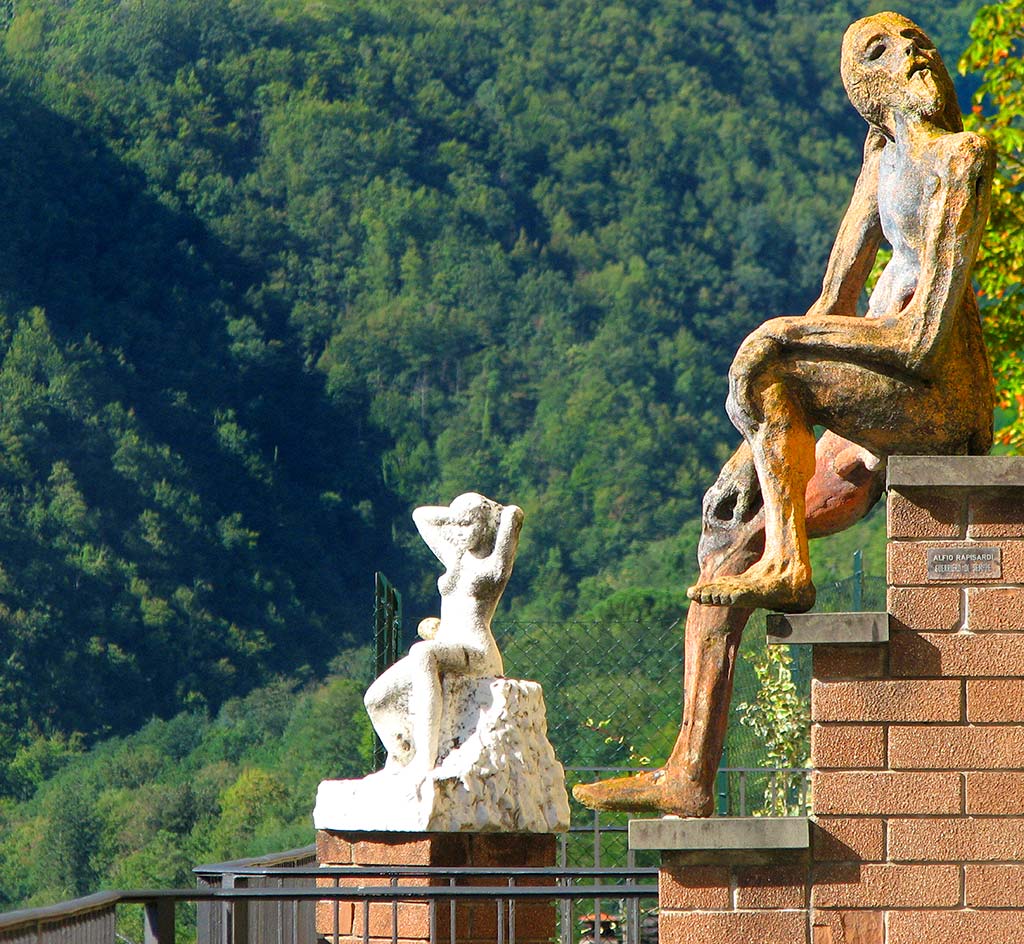 |
| Museum of Contemporary Art of Luicciana |
6. Chianti Sculpture Park (Castelnuovo Berardenga, Siena)
The Chianti Sculpture Park is a forest of oaks, chestnut trees and holm oaks full of works of art, located near the village of Pievasciata, a hamlet of Castelnuovo Berardenga, not far from Siena. It was born in 2004 from an idea of gallery owners Piero and Rosalba Giadrossi, who decided to devote this seven-hectare piece of land in the hills to art: the park’s particularity lies in the fact that all the works have been specially conceived for the place chosen by the artist, with the result that, the official presentation states, “the union between the sculptures and the forest, sounds, colors and light is total,” since “here the work of man does not tend to overpower nature, but to integrate and enhance it.” The artists who have worked in the park come from all continents: they include Adriano Visintin, Kei Nakamura, Anita Glesta, Costas Varotsos, Nicolas Bertoux, William Furlong, Jeff Saward, Roberto Cipollone, Pilar Aldana and many others who have worked on different materials: wood, marble, bronze, iron, glass. The Chianti Sculpture Park also has an amphitheater where a concert program is held in July and August. For more information you can visit the park’s official website.
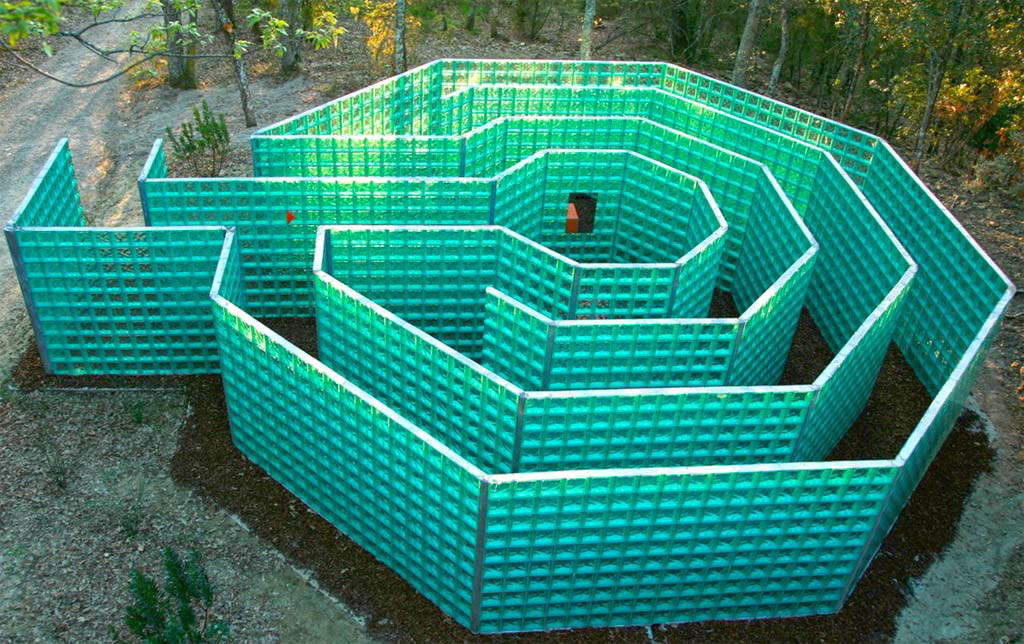 |
| Chianti Sculpture Park |
7. Castello di Ama for Contemporary Art (Gaiole in Chianti, Siena)
Another contemporary art park located in Chianti, as well as another place that blends together ancient and contemporary: the Castle, in fact, has medieval origins, although it was destroyed already in ancient times and on its ruins, in the 18th century, some residences were built using the stones of the ancient fortress. Today, the castle complex is owned by a winery, which in 1999, in collaboration with the Galleria Continua of San Gimignano (one of the most important private contemporary art galleries in Italy) launched an art project to enrich the village of Ama, its eighteenth-century villas and park with contemporary artworks. The theme of the collection is that of the genius loci of the area, and consequently the works are intended to enhance the specificities of this land, its characters, and its products. It features installations and sculptures by artists such as Michelangelo Pistoletto, Daniel Buren, Giulio Paolini, Kendell Geers, Anish Kapoor, Chen Zhen, Carlos Garaicoa, Louise Bourgeois, Lee Ufan, Miroslaw Balka, and many others. Since 2015, curator of the collection has been Philip Larrat-Smith, who is also in charge of choosing the artists called upon to constantly expand the collection. To learn more you can visit the company’s website.
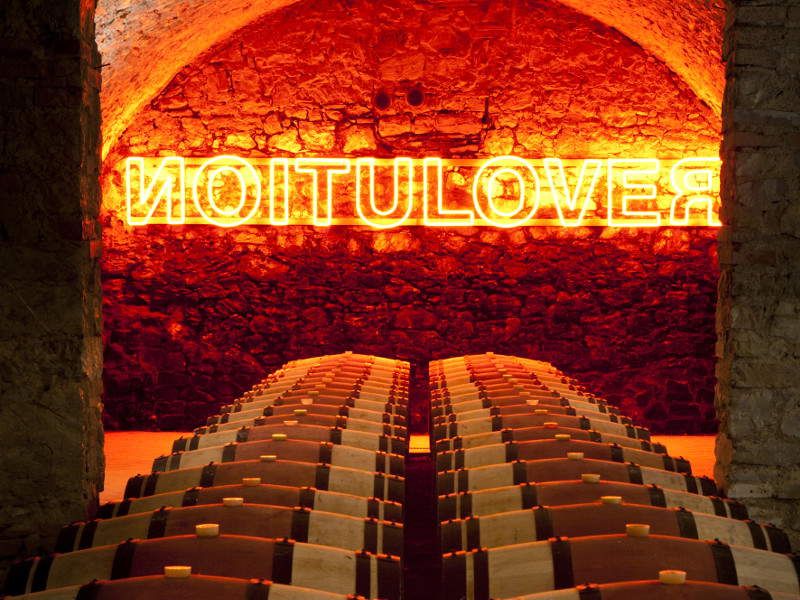 |
| Castle of Ama for Contemporary Art |
8. Poggio Valicaia Environmental Art Park (Scandicci, Florence)
The history of the Poggio Valicaia Park began in 1979, when entrepreneur Cesare Marchi donated to the municipality of Scandicci, just outside Florence, a piece of land that until then belonged to a farm and later became a public park. For several years, the park was a destination for long nature hikes, until the municipality came up with the idea of making it a contemporary art park-museum, focusing on environmental art. The goal of the park, the presentation states, is “to host solutions of art and landscape architecture in order to enhance this heritage, giving it a contemporary cultural dimension while expanding its already established users.” Inaugurated in 2003, the park opened with sculptures by Dario Bartolini, Maria Dompè and Italo Zuffi, and today in addition to these, works by Gilberto Zorio, Paolo Staccioli and Valentino Moradei Gabbrielli can be seen. Information on tours and works can be found on the park’s official website.
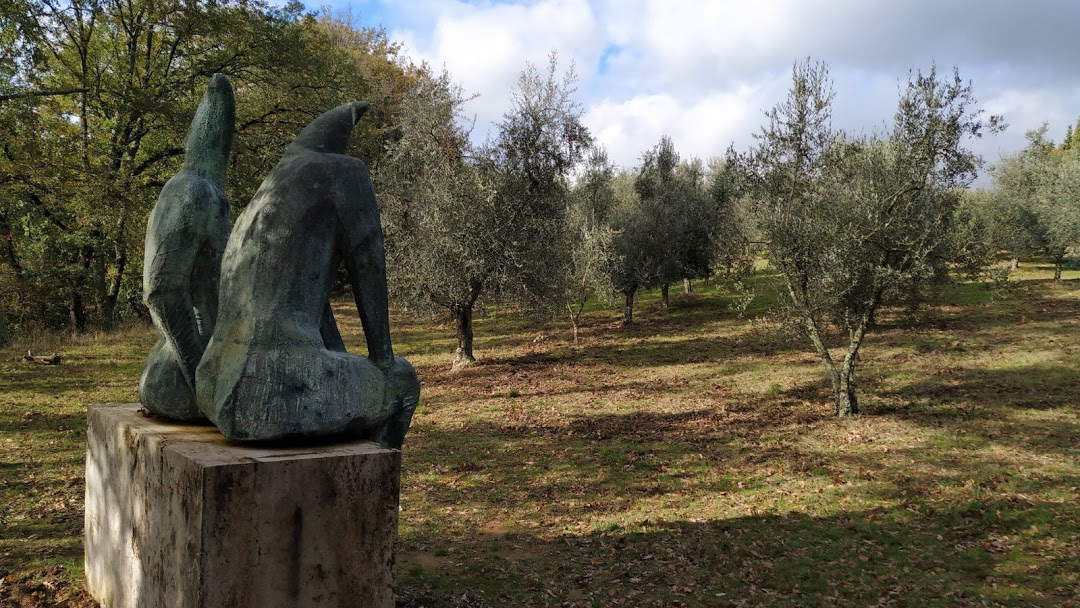 |
| Environmental Art Park of Poggio Valicaia |
8. Poggio Valicaia Environmental Art Park (Scandicci, Florence)
The history of Poggio Valicaia Park began in 1979, when entrepreneur Cesare Marchi donated to the City of Scandicci, on the outskirts of Florence, a piece of land that until then belonged to a farm and later became a public park. For several years, the park was a destination for long nature hikes, until the municipality came up with the idea of making it a contemporary art park-museum, focusing on environmental art. The goal of the park, the presentation states, is “to host solutions of art and landscape architecture in order to enhance this heritage, giving it a contemporary cultural dimension while expanding its already established users.” Inaugurated in 2003, the park opened with sculptures by Dario Bartolini, Maria Dompè and Italo Zuffi, and today in addition to these, works by Gilberto Zorio, Paolo Staccioli and Valentino Moradei Gabbrielli can be seen. Information on tours and works can be found on the park’s official website.
 |
| Environmental Art Park of Poggio Valicaia |
9.Castle of Santa Maria Novella (Certaldo, Florence)
The Castle of Santa Maria Novella is located on a hill a few kilometers from Certaldo, the village that was the birthplace of Giovanni Boccaccio: it was destroyed during the Battle of Montaperti in 1260, then rebuilt (it was later also drawn by Leonardo da Vinci, in a folio that is now in the collections of the British royal family in Windsor), and today has the neo-Gothic appearance that was given to it during renovations in the 19th century. Thus the castle today has the appearance of a residence in the form of a manor house, but above all it is the site of an interesting contemporary art project entitled Dopopaesaggio and promoted, since 1995, by the Cultural Association Castello di Santa Maria Novella. The idea of its creators (Marco Scotini, Laura Vecere and Claudia Paludetto Zanzotto, who were later joined by Pier Luigi Tazzi) is to bring the public closer to the languages of contemporary art.The castle has therefore been filled with interesting works of art by authors such as Remo Salvadori (the first contemporary artist to intervene in the castle), Tobias Rheberger, Hidetoshi Nagasawa, Bert Theis, Maria Nordman and many others.
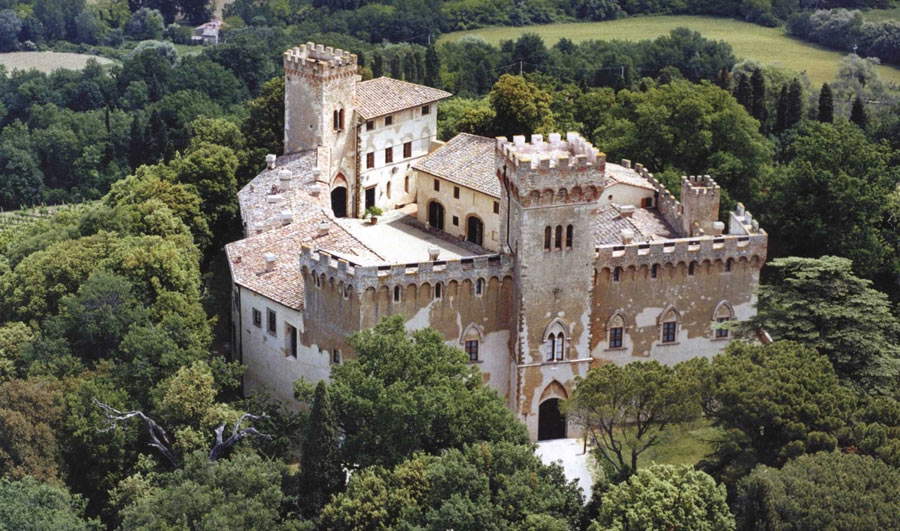 |
| Castle of Santa Maria Novella |
10. La Loggia Art Center (San Casciano Val di Pesa, Florence)
In the heart of the Florentine Chianti region, the “La Loggia” Art Center is housed in an ancient agricultural complex of Renaissance origins, a rural hamlet nestled among olive trees and vineyards, now the site of a hospitality facility. The contemporary art park was opened in 1994 on the initiative of Giulio Baruffaldi, with the aim of promoting contemporary art. The characteristic feature of “La Loggia” Art Center lies in the fact that here art is not only collected and exhibited, but also created: in fact, the center is a meeting place and a laboratory for creativity. There are three aims that animate the Center, as stated in its presentation: “research, that is, the place of innovation and inspiration; cultural interchange, that is, a place where artists can stay, meet, get to know each other, compare their experiences and thus, work and create; and the promotion of young artists, that is, to create in their favor new and concrete opportunities for visibility and inclusion in the art world.” Another of the park’s peculiarities is its ability to combine historicized artists (including big names such as Karel Appel, Arman, Arnaldo Pomodoro, Daniel Spoerri, and Aligi Sassu) with the works of young people. The works find space in a lush garden that also offers wonderful views of the Chianti landscape. For more information you can visit the official website.
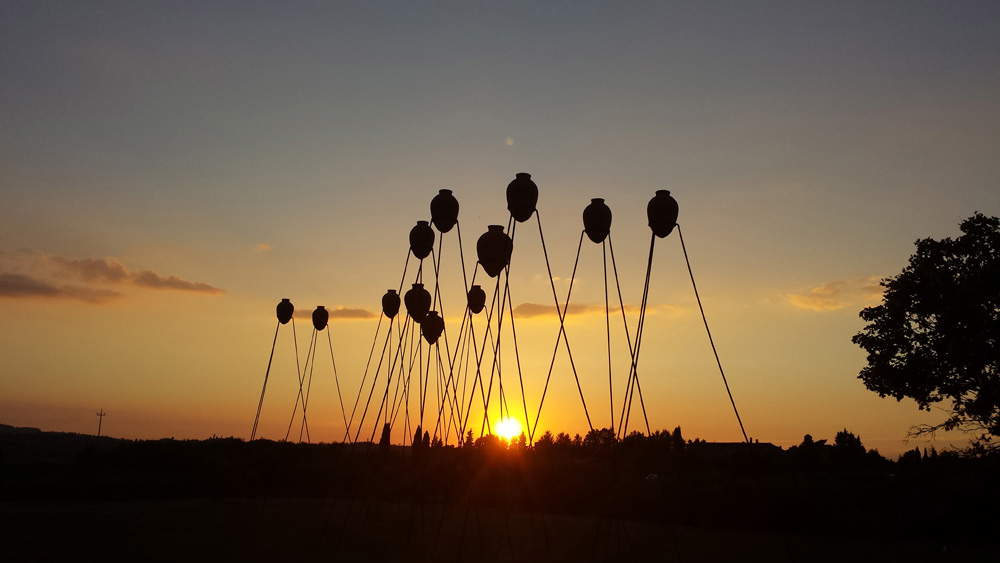 |
| La Loggia Art Center |
 |
| Art in parks: 10 outdoor contemporary art collections to see in Tuscany |
Warning: the translation into English of the original Italian article was created using automatic tools. We undertake to review all articles, but we do not guarantee the total absence of inaccuracies in the translation due to the program. You can find the original by clicking on the ITA button. If you find any mistake,please contact us.